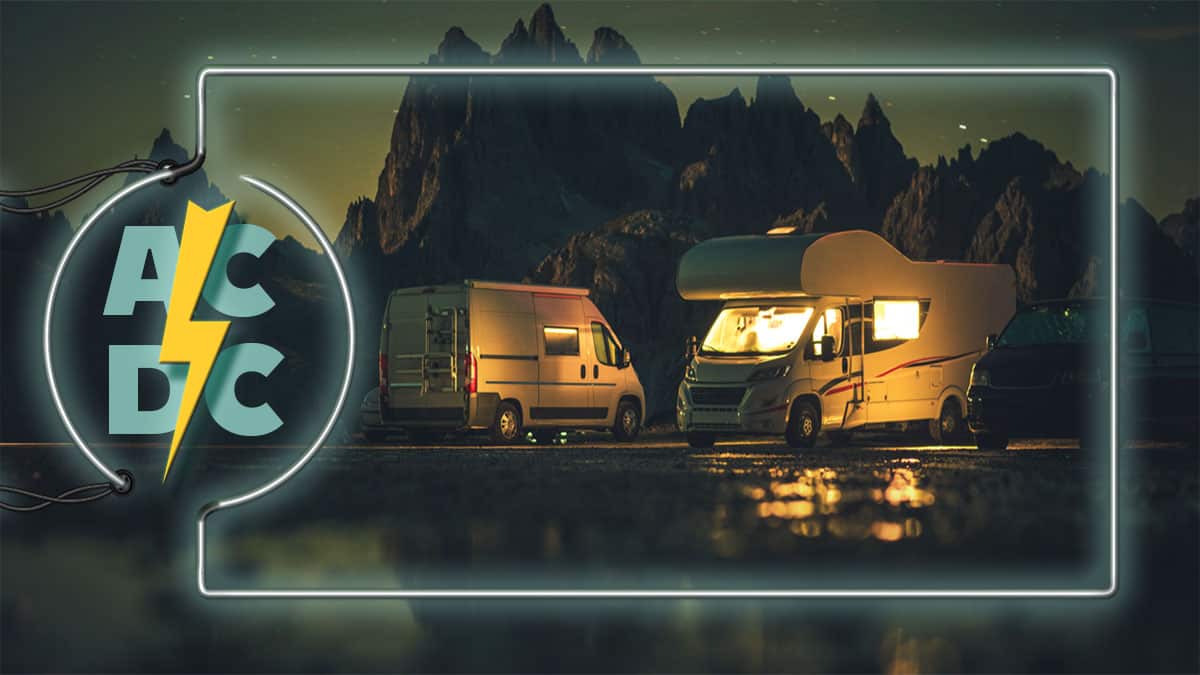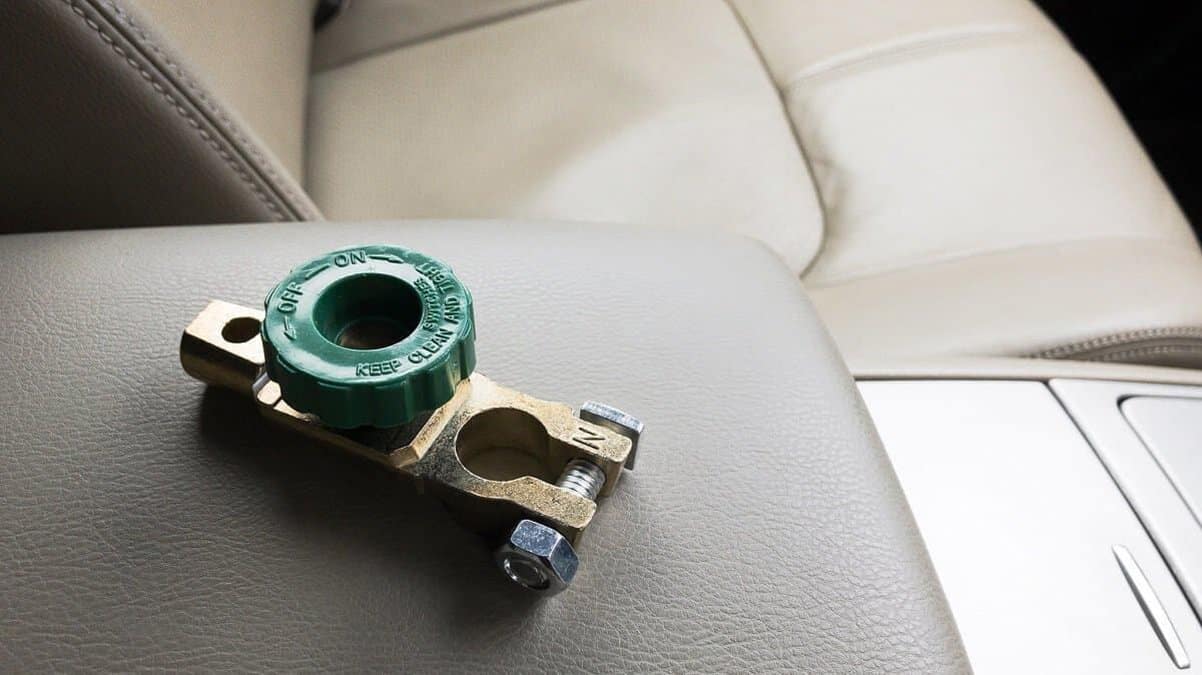What Is The Fastest Way To Charge RV Batteries?
Your RV batteries enable you to operate many RV appliances on 12 Volt DC power while you are camping. Not everything in your RV can run on your 12 volt DC system. However, lights, pump, furnace, slides and tongue jack all operate on your 12 Volt DC power system. This system is powered by your RV batteries. Most RVs are equipped with deep-cycle lead-acid 6-volt or 12-volt batteries that need to be kept charged, even when you aren’t using the RV. Keeping batteries charged helps to avoid permanent battery damage that can happen when batteries self-discharge.
There are four ways you can charge RV batteries.

Trickle charging
Trickle charging RV batteries is a good way to keep them topped up while they are in storage. There are two good reasons to remove your batteries when you store your RV in a remote location. One reason is that RV batteries are often targeted by thieves, even at supposedly secure storage facilities. Taking them home makes it less likely you’ll have to replace them when you go to pick up your RV.
The other reason is that you need to keep your RV batteries charged, while your RV is in storage. Lead acid RV batteries self discharge at a rate of about 4% per week. After you bring them home, it’s easy to hook them up to a Battery Tender or other trickle charger. That way you can be sure your batteries will be ready when you are ready to go. Trickle charging a deep cycle battery can take up to 10 hours, depending on how depleted it is.

Charge Your Batteries From Your Alternator
When your RV or the vehicle you tow your trailer with is running, its alternator will charge your RV house batteries with everything it’s got. However, if you are charging discharged trailer batteries with your tow vehicle alternator it’s usually a slow process. Because your alternator isn’t a specialized RV battery charger, it’s just not very fast at it. An alternator’s primary function running the vehicle’s electrical circuit; it’s secondary role is to recharge the primary battery following a start-up. When charging a practically full vehicle battery and a drained battery at the same time, alternators struggle and don’t charge very effectively.
Installing a DC-DC smart charger can really help your alternator to charge your RV house batteries much faster. DC-DC smart chargers take the alternator’s power and transform it to a higher amperage rate while analyzing the type and size of battery you have. If you plan to rely on your alternator significantly to charge your RV batteries, it’s definitely a good idea to have a DC-DC charger added to your RV electrical system.

Go Green With Solar Power
Going green with solar panels means you can charge your RV batteries for free, as long as the sun is hitting the solar panels. No sun means no battery charge. Solar power is not necessarily the fastest method of charging a discharged RV battery though. One 100W solar panel will recharge a 100Ah battery discharged to 50% in about 8 hours in full sunlight. With the right size and amount of solar panels in your setup, solar charging can be surprisingly fast, in a sunny location.
Plug Your RV Into Shore Power Or Generator
Your RV is perfectly equipped to keep its batteries charged whenever you are plugged into either shore power or a generator. Simply plugging your RV in is the fastest way to charge your RV. This is a good option if you store your rig at home or even when you are camping. When your RV is plugged in, the RV converter converts the 120 Volt AC current to 12 Volt DC current. Plugging in is definitely always the fastest and easiest method of charging RV your RV batteries.
Conclusion
While there are different ways to charge your RV battery, you should never deplete your lead acid RV battery beyond 50%. Plugging into shore power or a generator will give you the fastest charging time.





Your self-discharge estimate of ‘4% per week’ is only likely/possible in high temperatures with poor condition batteries. Self-discharge increases with temperature. If kept at room temperature, with a healthy/quality battery, self-discharge is less than 10%/month. See BatteryUniversity.com for accurate information on battery characteristics.
I think you should have mentioned the 3 stages of charging (see below) and that some trailer’s converters takes care of all of these. So when I winterize I just need to check the battery fluid level ( monthly for me ) and plug it in.
3- Stage Charging:
Bulk Charge, Absorption Charge, and Maintenance Charge.
1 – Bulk Charging is the first stage in which the charger identifies the battery and its needs, then applies a high voltage/amperage charge to do the bulk of the charging.
2 – Absorption Charging is when the battery has reached ~80% of its capacity and begins to lower the input current to the battery. This is sometimes known as the “cool-down” cycle.
3 – The third and final cycle is known as the Maintenance Charge (also known as “trickle” or “Float” charge). In this stage, the battery has already reached 95%; the battery charger will continue to apply a steady current until the battery reaches 100% capacity – at that time, the charger will continue to monitor the battery and apply a charge if it detects any loss.
DC-DC chargers are great, especially for LiFEPO4 batteries, with one caveat: verify that your alternator has sufficient capacity to deliver the necessary amperage to the charger. If not, then there’s a risk that the charger will either draw current from the vehicle’s primary battery to the point where the battery will be drained to the point where it can’t supply the necessary voltage to run the engine…not a good thing.
The amperage requirements of a DC-DC charger can also shorten the life of the alternator so it’s a good idea to replace the stock alternator with a high-output, heavy-duty one of sufficient capacity.
Further to Steve and Barry’s comments above.
” Trickle charging a deep cycle battery can take up to 10 hours, depending on how depleted it is. ”
You show a 1.25 Amp trickle charger so in 10 hrs at best you will add ~ 10AmpHrs of charge. Recharging a depleted RV deep cycle battery with a tickle charger will more likely be measured in days.
The issue with charging the RV battery from your vehicle has more to do with the losses in the long power wire and return ground than the alternator. This is an issue seen more in trailers as a motorhome should have properly sized wiring to overcome this. A DC-DC charger takes the lower voltage supplied to the trailer and increases it to the proper charging profile (usually 3 stage) for the battery chemistry you are using . This means that the current input to the DC-DC charger also increases, which further increases the losses in the wiring, so you may need to run a heavier gauge wire supplying the power anyway.
Solar panels only produce their rated output when the sun is perpendicular to the panel. So unless your panels are in an open area with a mounting system to track the sun across the sky they will never produce their rated output all day. Also you need to use a good quality MPPT controller to efficiently convert the power from the solar panel to the maximum power available to the RV batteries. The common PWM controllers limit a good portion of the power the solar panels could produce.
I recently had my RV battery explode. The trailer was parked beside my house and plugged in at the time. Based on looking at what was left of it, I believe it was due to low electrolyte. It was supposed to be “Maintenance Free” but did have removable caps. So I suggest watching the electrolyte level even if you supposedly do no have too.
Unless one purchases a high end battery maintainer, the risk of overcharging and boiling a lead acid or even an AGM battery is significant. This will destroy a battery over the offseason. Overcharging is a leading cause of battery failure in my experience as an auto and marine technician as well as a camper!